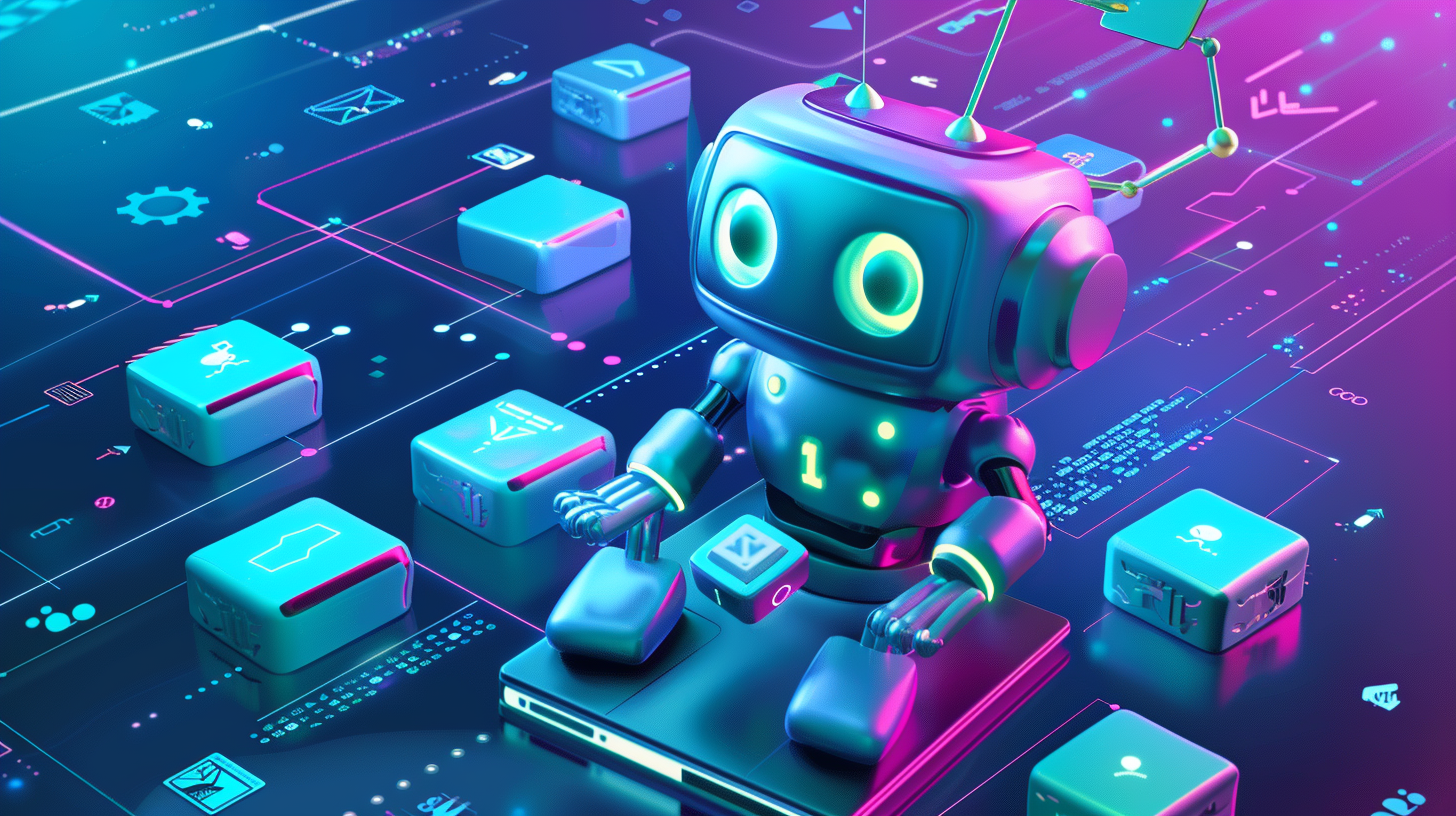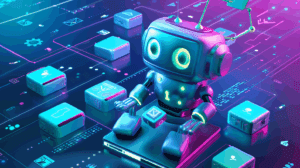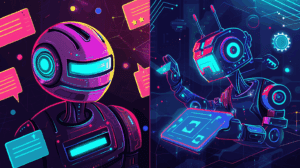Welcome to the Future: Unpacking AI Agents
If you’re wondering how to build your first AI agent without coding, AI agents are sophisticated software systems designed to automate and enhance tasks across various industries, revolutionizing how businesses operate. These agents employ advanced machine learning and artificial intelligence to perform functions ranging from customer service to data analysis. Unlike traditional software, AI agents can learn and adapt over time, making them invaluable for improving efficiency and productivity.
In healthcare, for instance, AI agents are making significant strides by moving beyond simple diagnostic tools. They now function autonomously, handling responsibilities such as scheduling appointments, generating medical reports, and monitoring patients remotely without human intervention. This shift not only streamlines processes but also enhances patient care, as AI systems can manage complex data and enable precise decision-making [Source: Forbes].
Moreover, industries like agriculture and logistics are leveraging AI to digitize operations and drastically improve safety and efficiency. Companies have reported reductions in incidents by up to 50% through AI-powered analytics and asset tracking, showcasing the technology’s transformative impact [Source: Diginomica].
As AI agents proliferate, they integrate into workplace systems, helping automate customer support, human resources, and financial processes. Tools like Microsoft 365 Copilot and AI service platforms are increasingly being used to streamline daily operations and reduce manual workloads, demonstrating how AI is reshaping the digital landscape [Source: Mashable].
To explore more about the future of AI agents and their functionalities, check out our piece on understanding the rise of agentic AI and how they are poised to transform multiple sectors.
Why No-Code? The Power of Simplicity
No-code platforms have revolutionized the way individuals, regardless of technical skills, can build AI agents, empowering a global surge in innovation. These platforms simplify complex processes, allowing non-developers to create and deploy applications quickly and effectively. For instance, Synthflow AI is an emerging no-code solution that enables enterprises to develop customizable voice AI agents without any coding knowledge required. As highlighted by [Source: Business Insider], this approach facilitates rapid deployment tailored to specific business needs, illustrating that no-code tools can bridge the gap between technology and user expertise.
Moreover, no-code platforms democratize access to technology, enabling individuals to focus on creativity and problem-solving rather than technical barriers. The ability to build applications without coding not only accelerates development timelines but also fosters a more inclusive environment for innovation. These platforms are designed to support various integrations and automation tools, which means teams can streamline operations and enhance efficiency without needing extensive IT involvement [Source: TechCrunch].
As businesses increasingly adopt no-code solutions, the landscape is shifting toward a more user-centric model of application development. This shift holds immense potential for various industries, leading to improved productivity and a reinvigorated workforce equipped to tackle complex challenges using AI. The result? A powerful movement where simplicity empowers individuals to create meaningful technology without the need for extensive programming skills, paving the way for a future where anyone can harness the capabilities of AI. For further insights into how no-code platforms are redefining tech landscapes, check out related articles on our site, such as Goodbye Chatbots, Hello Smart Agents.
Getting Started: Tools of the Trade
To embark on your journey of creating AI agents without any coding skills, a variety of no-code platforms are at your disposal. Here’s a glimpse into some of the most popular tools that empower users to build effective AI agents effortlessly:
- Synthflow: This Berlin-based platform specializes in crafting customizable voice AI agents that can conduct natural-sounding conversations. Synthflow enables enterprise customers to develop and deploy AI voice agents without needing coding expertise, making it an ideal choice for businesses looking to enhance customer interactions through voice technology. Its no-code functionality allows for rapid deployment and scalability, catering to diverse operational needs. Learn more about Synthflow’s innovative approach to voice AI [Source: Business Insider].
- OpenAI’s GPT Tools: Companies are increasingly integrating OpenAI’s services, such as the GPT-powered Microsoft 365 Copilot, which automates tasks across platforms like Dynamics 365 and Azure AI. This integration allows users to handle various operations, from HR support to customer service, seamlessly without writing any code. For businesses aiming for efficiency, these tools are transforming the workplace by automating routine tasks. More details can be found [Source: Mashable].
- Cohere: This platform functions as an all-in-one AI agent solution, aiming to eliminate tedious digital tasks through intelligent automation. It combines various functionalities that make it accessible for anyone looking to harness the power of AI without needing programming skills. Explore how Nordic businesses are utilizing Cohere’s capabilities [Source: TechCrunch].
These no-code tools represent just a small selection of the available options, illustrating that anyone can initiate their AI agent development journey, regardless of technical background. For deeper insights into specific tools and their applications, you can also check out our comprehensive guides on n8n or how AI agents are changing efficiency standards here.
Step-by-Step: Building Your First AI Agent
Building your first AI agent can be a rewarding experience, enabling you to automate processes and improve efficiency. Here’s a straightforward guide to help you design and deploy your AI agent quickly:
- Define the Purpose: Start by clearly defining what tasks you want your AI agent to handle. It could be anything from customer service inquiries to data entry tasks. Understanding the specific problem your AI agent will solve is crucial.
- Choose the Right Platform: Utilize no-code platforms like Synthflow or advanced frameworks such as OpenAI’s tools to create your AI agent effortlessly. These platforms allow you to build and launch AI agents without needing extensive programming knowledge. For instance, platforms like Amazon Bedrock or Microsoft Azure provide comprehensive environments for AI development and deployment. [Source: Business Insider].
- Design the Workflow: Map out the interaction flow for your AI agent. Consider all possible user inputs and how the agent should respond. Utilize decision trees or flowcharts to visualize these interactions. Designing a user-friendly experience is vital for the success of your AI agent.
- Training the Model: If your AI agent relies on machine learning, gather relevant data to train it effectively. Use open-source AI models or platforms that integrate learning capabilities to customize the agent’s responses based on specific needs [Source: TechCrunch].
- Testing and Iteration: Before full deployment, thoroughly test your AI agent. Put it through various scenarios to identify potential issues. Gather user feedback and iterate on the design and functionalities based on the results. This step ensures that the agent performs well in real-world scenarios [Source: BBN Times].
- Deployment: Once your AI agent is ready, deploy it into the desired environment. Monitor its performance closely to ensure it operates as expected. Use analytics tools to track metrics such as user engagement and task completion rates.
- Continuous Improvement: Post-deployment, continuously improve your AI agent based on user interaction and feedback. Regular updates not only enhance functionality but also keep the agent relevant in a rapidly evolving technological landscape.
By following these steps, you’ll be on your way to creating an effective AI agent that can streamline tasks and drive efficiencies in various applications. For more insights on AI agent capabilities, check out our articles on the AI tech stack and real tasks that AI agents handle today.
Real-World Applications: Success Stories in Action
Various businesses across multiple sectors are harnessing the power of AI agents to drive efficiency, enhance decision-making, and reduce operational costs. Here are some standout examples:
- Samsara: This company has transformed operations in agriculture and food distribution. By replacing outdated paper-based processes with AI-powered safety systems, they achieved a 40-50% reduction in incidents and moved towards predictive analytics and asset tracking, significantly boosting operational efficiency in logistics [Source: Diginomica].
- Intuit’s QuickBooks: Intuit has introduced AI agents in its QuickBooks platform to streamline tasks like reconciliation and expense tracking. By automating these processes, they help businesses and accountants save time and improve accuracy in financial management [Source: Accounting Today].
- Microsoft 365 Copilot: Through tools like Copilot and Azure AI, Microsoft is using AI agents to reduce administrative workloads. These agents assist in tasks from customer service to financial processing, effectively freeing up human resources for more strategic tasks [Source: Mashable].
- Healthcare Innovations: AI agents are revolutionizing healthcare by performing autonomous tasks such as scheduling, patient monitoring, and generating medical reports. Such advancements promise to enhance patient care by minimizing human error and improving the efficiency of health services [Source: Forbes].
These success stories demonstrate the vast potential of AI agents in not just streamlining operations but also transforming entire industries. For more insights into the various impacts of AI technology and how it shapes future business landscapes, check our articles on the AI agent tech stack and the rise of agentic AI.
Sources
- Accounting Today – Intuit Debuts AI Agents for QuickBooks
- BBN Times – Meet Agentforce: The AI-Powered Workforce Driving $50M in Savings
- Business Insider – Synthflow AI Pitch Deck Funding Voice
- Diginomica – Paper AI: How Samsara Helping Agriculture, Food Distribution, and Chemical Companies Digitize
- Forbes – The Amazing Ways AI Agents Will Transform Healthcare
- Mashable – 7 AI Agents Widely Used by Companies Right Now
- TechCrunch – How Synthflow AI Is Cutting Through the Noise in a Loud AI Voice Category



